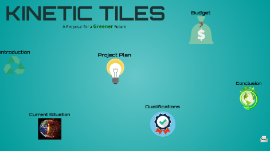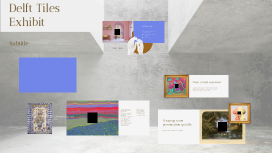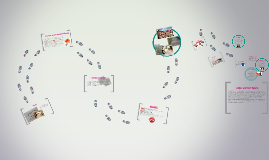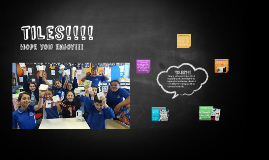TILES
Transcript: cracks Surface Coating slowly deteriorates becomes Powdery sand and cement content gets affected after the surface coating is gone. WHERE IT IS USED water and cement are used to make the concrete for tiles. In making that the ratio needs to be adequate. For every kilogram of cement, about 0.25kg of water is needed to fully complete the hydration reactions. The hydration reaction is heat which allows the concrete to harden. THEREFORE concrete requires a water-cement ratio of 1:4. Lower water to cement ratios are used to produce higher strength concrete. Tiles made from ceramic stone, metal and glass are most commonly used for flooring,roofs, walls, showers and tabletops applications. Tiles made from wood and mineral wool are typically used for wall and ceiling applications VISUAL CHARATERISTICS ROOF TILES SLATE: a fine-grained grey, green, or bluish-purple metamorphic rock easily split into smooth, flat plates. TERRACOTTA: a type of earthenware, is a clay-based unglazed or glazed ceramic, where the fired body is porous PLASTIC: a synthetic material made from a wide range of organic polymers such as polyethylene, PVC, nylon, etc., that can be moulded into shape while soft, and then set into a rigid or slightly elastic form CONCRETE: a building material made from a mixture of broken stone or gravel, sand, cement, and water, which can be spread or poured into moulds and forms a stone-like mass on hardening. CERAMIC: made of clay and permanently hardened by heat GLASS: a hard, brittle substance, typically transparent or translucent, made by fusing sand with soda and lime and cooling rapidly. It is used to make windows, drinking containers, and other articles WOOD: the main substance of the trunk. It is a hard fibrous material often used for fuel or timber. WATER: liquid used to mix the substances such as cement, sand together. Long Degradation The ability of the roof tile relies heavily on the way that it has been made. For example if the tile has been through a mixture that has too much water, it would be less strong and durable compared to one which was made with the correct water and cement ratio. Roof tiles that are sold are the best of the batch. This means the tiles are made through accurate processes with the correct mixtures with no contamination of rubbish and precise cutting. This is to ensure that the tile is: STRONG DURABLE LONG LASTING USABLE The roof tiles are expected to protect the house against harsh environment such as heavy rain and storms. Throughout the time they are set for use they absorb sunlight and keep the house cool. Roof tiles are also expected to reduce outside noises. Tile roofs require maintenance to ensure they protect your most valuable asset, your home and its possessions. The basic level of maintenance required is every 5 to 10 years. Maintenance is usually done on capping tiles along the ridge (top) and hips (sides/corners) of tile roofs. These capping tiles are secured by mortaring in place (called bedding) and then waterproofed and finished off (pointed) with a flexible compound. BENIFITS TILES Structural Adequacy Versatile – Tiles can be used in a multitude of applications. Hardwearing –Tiles are not easily scratched, marked or punctured. Low Maintenance – Tiles do not require regular maintenance such as sanding and varnishing or professional cleaning. Easy Cleaning – Tiles are easy to clean. Colourfast – Tiles will not fade or change colour. Stain Resistant – Glazed Tiles will not stain. Hygienic – Tiles do not trap or hide dirt or dust mites. Resistant to Chemicals – Tiles are resistant to chemicals. Energy Efficient – Tiles adopt the air temperature of a room which assists in keeping heating and cooling costs down. Environmentally Safe – Tiles do not give off any noxious gases or chemicals. Concrete roof tiles are made to last for 20 years. The Concrete used to make roof tiles are made at the highest standard so it is strong and durable and able to withstand many years of wear and tear from different climates. DEFECTS Tiles are made in factories. They first come in raw materials such as clay.They are then soaked and go through a fine press. Then it goes through a rolling mill to a conveyor belt and then it is cut to size and shaped. Tiles then get sprayed with color and left to dry. Once dried it is ready for the burning process.Modern factories use hydro-casing tunnel kilns. In there, the tiles get gradually warmed up until the desired burning temperature is reached. After burning, it is important to slowly lower the temperature. To finish, it goes through testing and if it pass it is stacked up in pallets and is ready for use. CONSTRUCTION DETAILS Sources and Embodied Energy what is it? A tile is thin rectangular slab of baked clay or other material. SERVICEABILITY & PERFORMANCE REQUIREMENTS FIRE RESISTANCE Protection In 2009 there was a terrible bushfire in Victoria. Due to the bushfire building design and the selection of materials for housing became an important

















